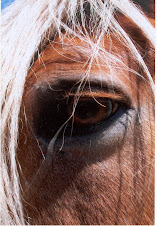My husband Paul is a carpenter. In his job, the closest he usually gets to saving a life is fixing a roof so it doesn’t fall down on someone’s head. That is, until last Wednesday.
Paul works for the National Park Service. He was on the job fixing an attic at Little Sand Bay when a call came in requiring help with a search and rescue.
“We didn’t have much information,” he said. “Just a radio call saying someone was in the water.”
Why was a carpenter called for a search and rescue? Because it was within park boundaries and they were the closest available personnel.
Personnel with the Apostle Islands National Lakeshore work closely on and around Lake Superior, and she is an unpredictable partner. The National Park Service provides training for park service employees in first aid and CPR. Interested persons can also be trained in search and rescue.
“I’ve done ice search and rescue training but hadn’t trained for anything like what happened that day,” he said.
When the call came in, Paul and the other members of the boat crew scrambled to make sure they had the right equipment and the best information. They knew the search was in the area of the Meyer’s Beach sea caves.
“It’s exciting at that point. The adrenaline is flowing. This could be important,” he said.
Paul has been on two other search and rescue missions that were non-eventful and mostly provided a break in the routine of the day. Once in the boat, if you aren’t the boat operator, there isn’t much to do but be patient.
“We had three boats going out and we still weren’t sure what we were looking for,” he said. “It could have been a kayak overturned. We didn’t know.”
The three boats arrived at the estimated point and Paul’s boat was instructed to slow down and get close to shore heading east. Information also came in from a member of the team on shore.
“Radio communication can be spotty out there so we have someone on shore who can often see things we can’t,” said Paul. “At this point, I’m part of a three-boat team. Chances are we aren’t going to be the ones who do the rescue. We are just part of the team.”
Chances were different this time. Though another boat was the first to find the victim in the water and throw him a life preserver, it was the boat Paul was in that was best suited to do the actual rescue.
“The guy had fallen into the water from the cliff above and he was able to get himself to the edge and was standing in a small cave, ankle deep in water, and trying to hold on,” said Paul. “There’s no shoreline there, nowhere for him to go. By the time we got there, he was shaking pretty hard and he was only a few minutes from falling into the water. I think he knew it was life or death if someone didn’t get to him.”
Paul could hear the man saying, “Please hurry!”
The boat Paul was in had a ramp in the front that could be lowered, making it easier to get a person out of the water. While Abby, the boat operator, maneuvered the boat in the choppy water, Paul went to the front of the boat and grabbed a line in his left hand.
“When we get close, you grab my hand and I’ll grab yours,” he called to the man. The man stepped toward the ramp and their hands met.
“I yanked him into the boat,” said Paul. “I didn’t want to lose him and have to try again.”
Once in the boat, the man collapsed.
In another boat was a ranger who was also a paramedic. Blankets were thrown from boat to boat and then the boat operators had to again maneuver to get the two boats close enough for the ranger to get into the boat with the rescued victim, who was then transported back to the waiting ambulance at Little Sand Bay.
Successful rescue, a life saved — now what do you do?
“We did what most people would do,” said Paul. “We re-hashed the whole thing over several times.”
I’m proud of my husband. I think he’s a hero, but he is a bit more modest.
“It wasn’t me. It was us,” he said. “Everything worked out right. Having good boat operators and being available was what saved him. In a rescue like this one, we had what we needed, three good boat operators with the ability to get that close to the rocks without hurting the person in the water. Abby did a wonderful job. I think perfect is good enough.”
He also credits someone else for the success of the mission.
“This guy was saved by the grace of God that day,” said Paul. “He got too close to the edge and started to slide down the bank. He thinks he fell about 40 feet into the water and he didn’t get hurt. There were people on the bank with cell phones who were able to call for help and we were available.”
Saved by the grace of God and the help of a carpenter.
Subscribe to:
Post Comments (Atom)





No comments:
Post a Comment